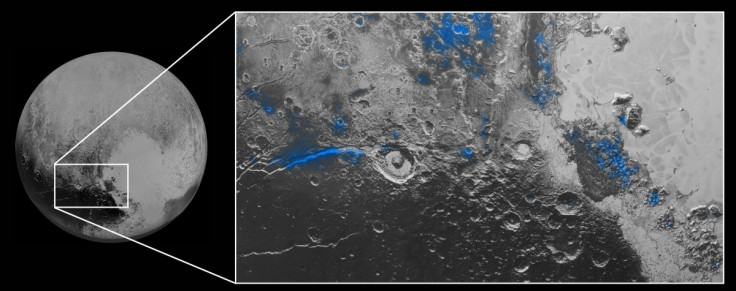Pluto revealed: Blue skies and red 'water ice' discovered in two significant findings

The first colour photos which show a blue haze encircling Pluto have been released by NASA. In a significant second finding, the images, beamed back by the New Horizons probe, shows that the dwarf planet also contains "numerous small, exposed regions of water ice".
"Who would have expected a blue sky in the Kuiper Belt?" marvelled Alan Stern, the mission's principal investigator from Southwest Research Institute (SwRI) in Boulder, Colorado. "It's gorgeous," he added.
Pluto's blue tinge is caused by minute, sunlight-scattering particles in the atmosphere known as tholins. Unlike Earth, "if you stood on Pluto and looked straight up, the sky would actually appear black because of the rarity of the atmosphere," the BBC reported.
"That striking blue tint tells us about the size and composition of the haze particles," said science team researcher Carly Howett, also of SwRI. "A blue sky often results from scattering of sunlight by very small particles. On Earth, those particles are very tiny nitrogen molecules. On Pluto they appear to be larger — but still relatively small — soot-like particles we call tholins."
In addition to the blue haze, NASA has also discovered numerous patches of water ice on Pluto and the images show that they are red in colour, leaving scientists astounded. "I'm surprised that this water ice is so red," said Silvia Protopapa, a science team member from the University of Maryland, College Park. "We don't yet understand the relationship between water ice and the reddish tholin colorants on Pluto's surface."

NASA said that the New Horizons spacecraft is currently 3.1 billion miles (5 billion kilometres) from Earth and that all systems are "healthy and operating normally".
© Copyright IBTimes 2025. All rights reserved.






















